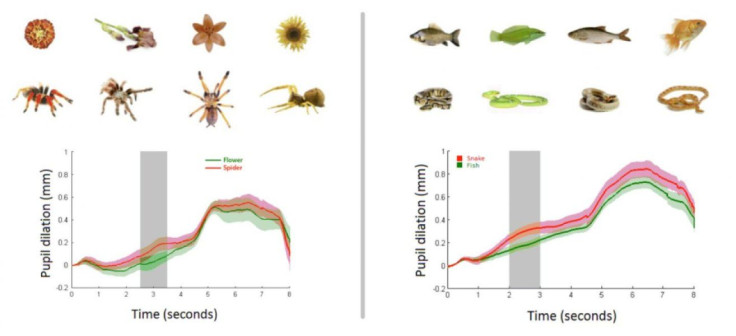Fear Of Spiders, Snakes Is An Evolutionary Response: Study
Spiders and snakes make the toughest people on the planet jump. Their popularity in horror films and thrillers has ensured that this fear is projected over time, through generations. But, a recent study has revealed that humans carry an innate fear towards these arachnid and reptilian friends.
Scientists at the Max Planck Institute for Human Cognitive and Brain Sciences (MPI CBS) in Leipzig, Germany, and the Uppsala University, Sweden, noticed that spiders invoked a stress reaction from infants at ages as young as 6-months-old. Most children that age cannot differentiate between objects that could harm them and safe objects, but spiders and snakes seemed to stress them out and invoke an emotional response.
There is a debate about origins of fears and phobias where some people tend to think fears stem from social cues from a very young age. The widespread anxiety we display towards certain elements was assumed by some scientists to be a result of learning fear from our surroundings or adults when we are children.
But infants who have not explored this world and have not been influenced by their surroundings form the perfect study group to test innate responses. "When we showed pictures of a snake or a spider to the babies instead of a flower or a fish of the same size and colour, they reacted with significantly bigger pupils," says Stefanie Hoehl, lead investigator of the study and neuroscientist at MPI CBS and the University of Vienna in a press release on the Max Planck Institute's website.
People from European countries like Germany do not encounter spiders or snakes often. In fact, there are no spiders deadly to humans there and just two poisonous snakes but encounters are very rare. People there still display a fear of snakes and spiders.
The team concluded that the fear is inherent. They drew parallels to primates and their evolutionary response to dangerous creatures such as poisonous snakes and spiders. The team says that "this obviously inherited stress reaction in turn predisposes us to learn these animals as dangerous or disgusting. When this accompanies further factors it can develop into a real fear or even phobia."

The team said that a very strong reaction is exhibited by the parents. This is passed on through the generations. A genetic predisposition for a hyperactive amygdala is integral in judging and eliminating hazards.
"We assume that the reason for this particular reaction upon seeing spiders and snakes is due to the coexistence of these potentially dangerous animals with humans and their ancestors for more than 40 to 60 million years — and therefore much longer than with today’s dangerous mammals," said Hoehl. The evolutionary embedding of this information could serve as an important tool to aid our survival.
The same process is used for more recent, man-made fears too. The team feels that the same mechanism is used to develop fears towards knives, syringes and sockets. This is because, after generations of injury, a response is imbibed into our brains. This response is passed on from parent to offspring in a bid to reduce injury and death.
© Copyright IBTimes 2025. All rights reserved.





















